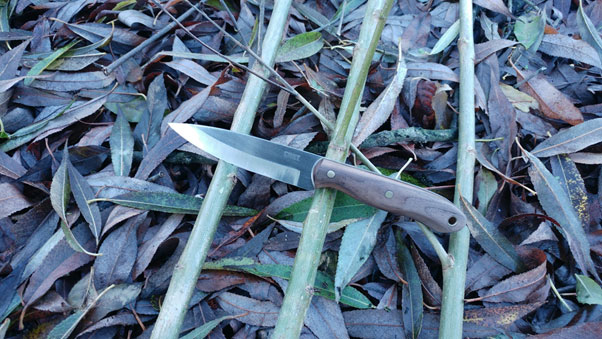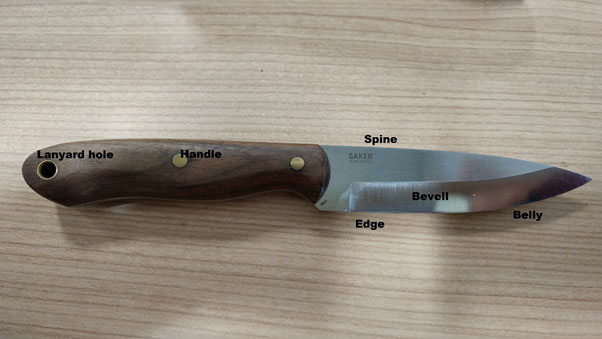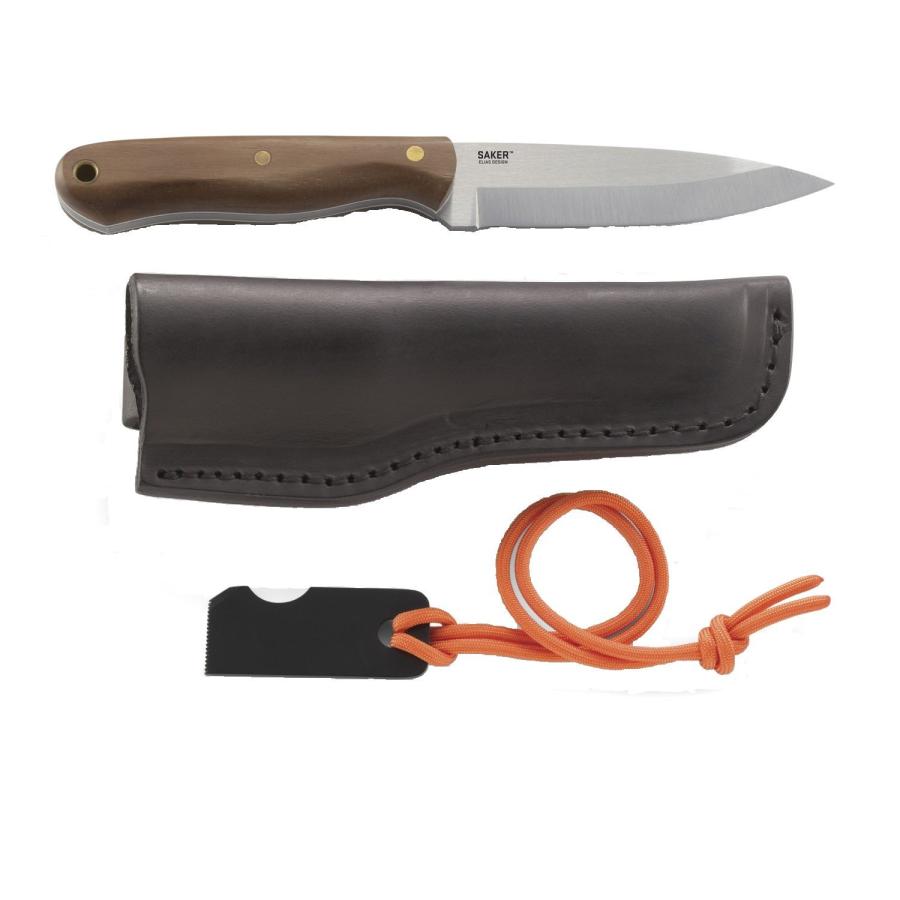Choosing and Using Survival Knives
December 03 2017
Well known Canadian Bushcraft and Survival Skills Instructor Mors Kochanski described a survival (or bushcraft) knife as ‘a pry bar that can work wood really, really well’.
A Bushcraft Knife
This is what we need to look for in a primary knife; something that will perform basic wood craft tasks such as creating feather sticks, whittling, preparing food and game and at a push batoning or splitting SMALL wood. The small needs to be emphasised because you must not risk your primary knife by splitting large logs or treating it like and axe or froe.
Something from four to five inches long with a good point and a comfortable handle is what to look for, it sounds obvious that your knife should be pointy, but there are many on the market which may have a razor sharp edge but due to the design of their blade have no point, such as ‘tanto’ style knives. The point is very important for preparing game and for carving.
Something like the CRKT Saker is an ideal primary knife for basic bushcraft and survival tasks.

Figure 1 Cutting willow withies with the Saker

Figure 2 anatomy of a knife
There is often a need to split wood either to get to the centre of wet wood for fire lighting or to speed up the process of crafting smaller wooden items such as netting needles and cooking utensils.
There are two approaches to splitting wood with nothing but a knife one option is to use your knife to carve simple wedges and then rather than splitting a log with your knife you can start a very superficial split with the knife and then drive the wedges you have made with a stick to split your log.
The other method is very controversial; ‘batoning’ is the process of using a wooden mallet or, more often than not, just a sturdy stick to drive the knife through a log along the grain effectively using it as a wedge. This really constitutes abuse of a knife and places undue strain on it and many people will argue that it should never be done. I would normally agree, and by choice I would prefer to use a hatchet, axe or froe for this kind of task but the fact is that a good bushcraft knife will perform these tasks at a push, but if you are expecting to do a lot of heavy duty work you might need to consider something a bit more robust.
Get to tha Choppa!
Sometimes Crocodile Dundee’s catchphrase “that’s not a knife” is true of a bushcraft knife which we might need to use to to split wood like an axe, make holes like a drill, smooth or prepare flat surfaces like a spoke shave or draw knife, carve wood like a whittling knife and prepare game like a skinning knife.
Purpose built tools would be better for each of these tasks they are not always available so a survival knife that can be pressed to all these tasks might be required. Larger knives or axes are the ideal tool for processing and chopping fire wood, or cutting through undergrowth. Something like the CRKT Redemption, or Gerber Brush Hook is large enough for batoning and chopping tasks. For splitting firewood and speeding up your whittling projects a small axe or hatchet is ideal, in fact this Gerber product combines both axe and knife in one neat package.
EDC
As well as larger knives you will want something smaller to carry on your person for everyday tasks and in case of emergency or survival situations. This might be a simple folding pocket knife or a multitool to give you the tools you need for a range of daily tasks or impromptu repairs.
Small format fixed blades are also useful if you want a more robust knife that can be used for a range of tasks. Something like the CRKT S.P.E.W would be ideal. These provide a stronger alternative to the convenient but inherently weak folding blade knives traditional carried as ‘edc’ (every day carry) knives.
Oldest and Most Important Tool
Knives are some of the oldest metal tools known to man and for good reason, spending any time out of doors or dealing with a survival situation will require you to have an be able to use a knife. So make sure you get at least one for your pocket and keep them there all the time as far as is legal. Don’t be without one unless you can help it, it might save your life.
Recents Posts
September 26 2018
Train Like You Fight with a Good Set of Ear Plugs
July 04 2018
A Holster by Any Other Name is Still a Holster
June 03 2018
DNA Tactical Self-Defense Tools
May 15 2018
A Guide to Handgun Holsters
April 19 2018
Waistband v. Shoulder v. Ankle: The Great Holster Debate
April 05 2018
Essential Gear Components for Disaster Survival
March 22 2018
Protecting Your Eyes on the Range is Plain Common Sense
January 24 2018
Customize Your Gear to Win the Fight of Your Life
January 19 2018
How to Choose A Hand-Held Light
January 11 2018
How to Choose a Hands-Free Light
January 08 2018
The Right Holster for Everyday Carry? You are Your Own Expert
December 11 2017
Emergency Outdoors Medicine and Rescue
December 10 2017
Cordage and Accessories for Survival and Outdoors
November 25 2017
The First Priority of Survival
November 19 2017
Water, Water Everywhere but Not a Drop to Drink
